Russia’s first public railroad linked St. Petersburg to the suburb of Tsarskoye Selo, a major summer retreat of the Russian imperial family. Its construction began on May 1, 1836, under the supervision of Austrian engineer Franz Gerstner. The inauguration ceremony took place on October 30, 1837.

Russia’s first public railroad linked St. Petersburg to the suburb of Tsarskoye Selo, a major summer retreat of the Russian imperial family. Its construction began on May 1, 1836, under the supervision of Austrian engineer Franz Gerstner. The inauguration ceremony took place on October 30, 1837. A second leg of the project extended the railroad to the suburban Pavlovsk, the site of another imperial estate. But the construction of railroads in Russia did not assume a massive scale until the second half of the 19th century. In 1892, a West-Siberian railroad project was launched, later becoming part of the famous Trans-Siberian Railroad, according to the Web-site http://history.rzd.ru. Photo: A priest about to perform a service outside a church-car, on the West-Siberian Railroad, 1898.
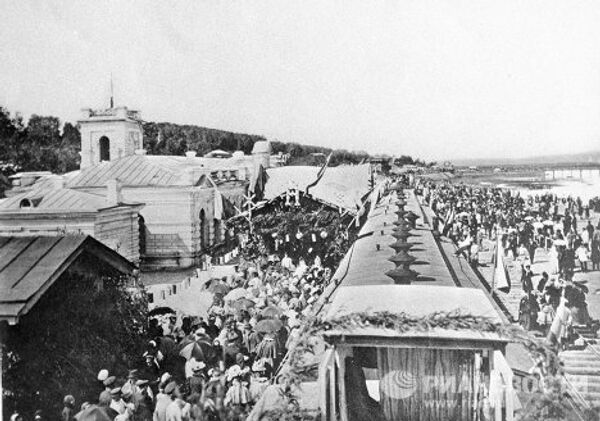
Railroad Worker Day was instituted in Russia in 1896, to coincide with the birthday of Emperor Nicholas I, who was responsible for the start of railroad construction in Russia. The holiday was observed until 1917, but was largely forgotten for two decades following the Bolshevik Revolution. The tradition was revived in 1935 when the Soviet railroad worker community managed – for the first time in years – to exceed their freight and passenger traffic targets. Railroad Worker Day was then moved to July 30 and moved again to the first Sunday of August. Photo: Greeting the first train to run through Irkutsk, in Siberia, 1910.
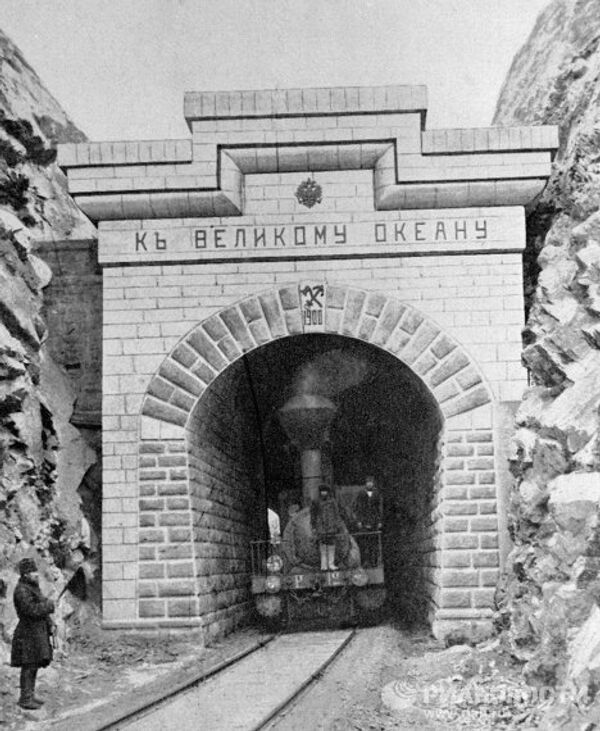
The construction of the Trans-Siberian Railroad, linking European Russia with its Far East, lasted from 1891 through 1916. In 1895, the Baikal Railroad project was launched, later becoming part of the Trans-Siberian Railroad. Photo: A tunnel through the Yablonovy Ridge, on the Baikal Railroad, 1930.

A railroad project linking Siberia with Turkmenistan and other parts of Soviet Central Asia began in 1926. The idea was first proposed back in 1886. The Turkmenistan-Siberian Railroad became a high-profile construction project in Soviet Russia’s first five-year plan, according to the site http://turksib.com. Photo: The Turkmenistan-Siberian Railroad’s first train crossing a bridge on the Chui River, 1931.
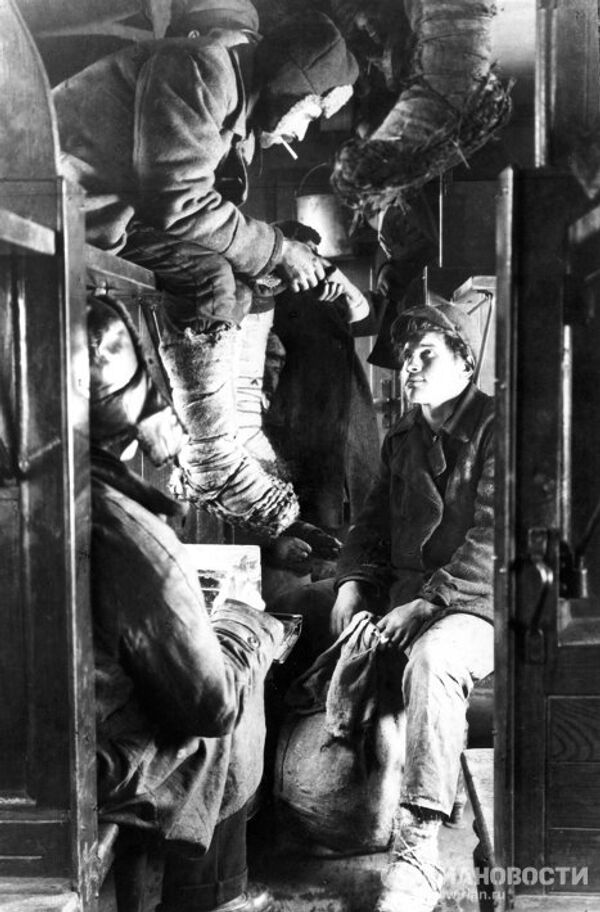
The Turkmenistan-Siberian Railroad opened on April 21, 1930, when a train, pulled by an E-1441 locomotive, took the railroad’s builders on the maiden journey. Photo: Builders riding to the Magnitogorsk Metallurgic Plant construction site.

Railroad workers made a considerable contribution to the Soviet Union’s victory over Nazi Germany in 1945. About 20 million train cars carried military personnel, hardware, ammunition, and provisions during WWII. If those cars were lined up one after the other, they would span Earth four times along the equator.
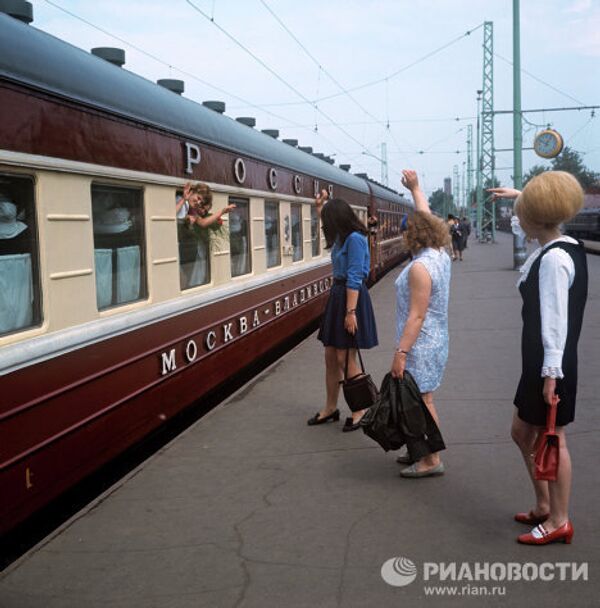
The history of the nation’s flagship train, Rossiya (Russia), is inextricably bound with that of the Trans-Siberian Railroad. The completion in 1916 of a bridge over the Amur River, near Khabarovsk, paved the way for a direct passenger line between Moscow and Vladivostok. Fifty years later, on September 30, 1966, the Rossiya train set out on its maiden journey. Its route is one of the world’s longest passenger rail lines. Photo: Departure of a Rossiya train from Moscow’s Yaroslavl railroad station, 1970.

The Moscow Sortirovochnaya rail yard is the oldest on the Moscow rail network. The yard, which marked its centenary in 2009, became the site of the first communist “subbotnik” in 1919 when three locomotives were repaired here. “Subbotniks” [a derivative of the Russian word for “Saturday”], a tradition initiated by the Bolshevik leader Vladimir Lenin, involved volunteers doing cleaning and repair work on weekends. Photo: A locomotive crew of the Moscow Sortirovochnaya rail yard.
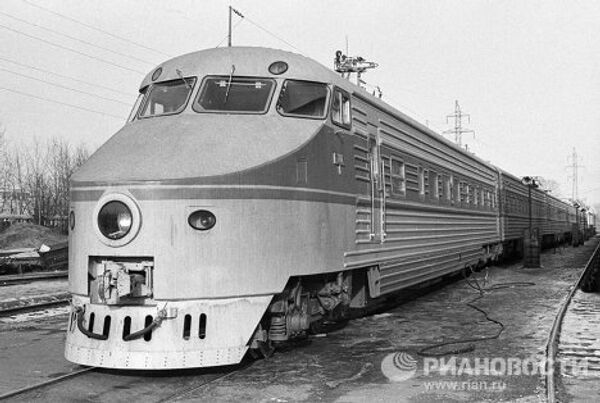
Photo: The high-speed Krylaty train is capable of reaching speeds of 200 kilometers per hour, 1978.
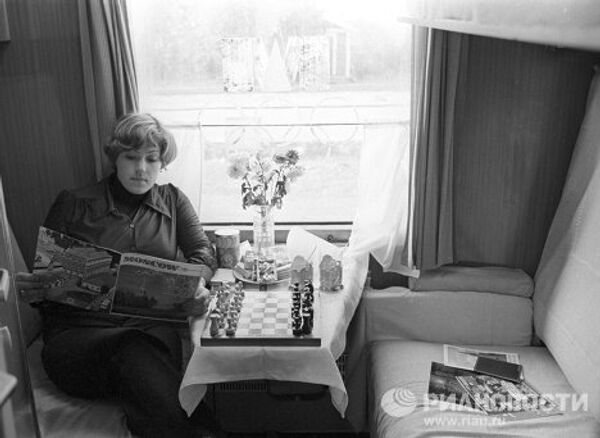
Photo: A 1980 Olympics contender in a train compartment.
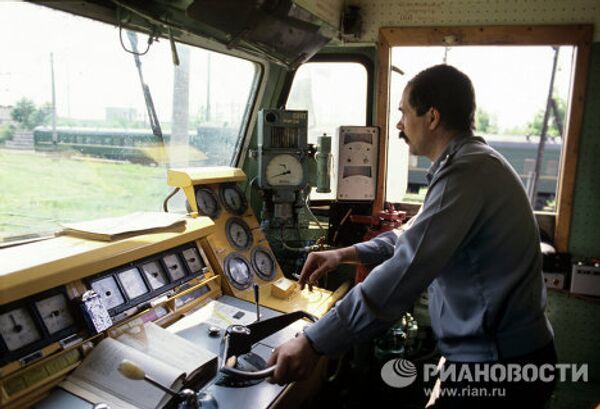
The Trans-Siberian Railroad is the world’s longest rail line. As part of major renovation works in the 1990s-2000s, the rail bridge over the Amur River, near Khabarovsk, was upgraded to remove the Trans-Siberian Railroad’s last remaining single-track section. In 2002, power lines were laid all along the railroad. Photo: Train engineer Vasily Nikiforov on the Trans-Siberian Railroad, 1991.

The rapid Krasnaya Strela train is a major shuttle between Moscow and St. Petersburg, covering the distance in 8 hours. It began operating on June 10, 1931.
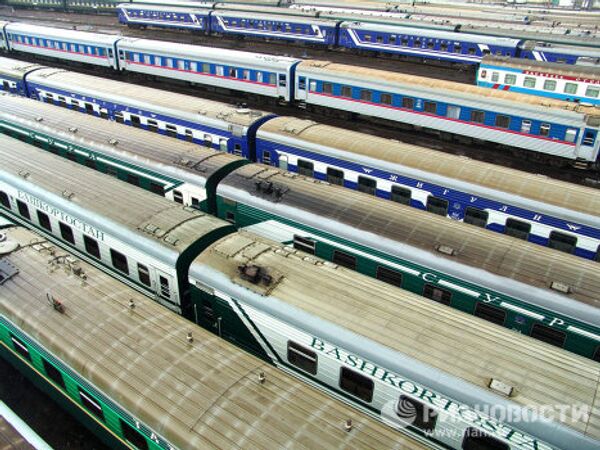
The government-run Moscow-Kursk Railroad operated between 1866 and 1918, linking central Russia with the country’s southeastern provinces. It was nationalized in 1918, following the Bolshevik Revolution, and incorporated in the Moscow-Donbass line in 1953. Now it is part of the Moscow railroad network. Photo: An intercity train on standby tracks on the Moscow-Kursk Railroad, 2005.

The Grand Express train is a luxury Moscow-St. Petersburg shuttle. The quality of service provided here is comparable to that of a five-star hotel. Photo: a first-class sleeping compartment on the Grand Express, 2005.

Russia’s first luxury tourist train, the Trans-Siberian Golden Eagle, was unveiled on April 26, 2007, at the Belarusian Station in Moscow. A joint Russian-British project, this train was designed especially for the world’s longest rail route, Moscow-Vladivostok. Photo: the Trans-Siberian Golden Eagle luxury train, 2007.

Tikhy Don is another rapid Russian passenger train, shuttling between Moscow and the southern city of Rostov-on-Don. It made its debut in 1966. Originally, the cars were painted indigo, with a red stripe beneath the windows. But the design was changed in the early 2000s. Photo: Passengers in a first-class car on the Tikhy Don train.
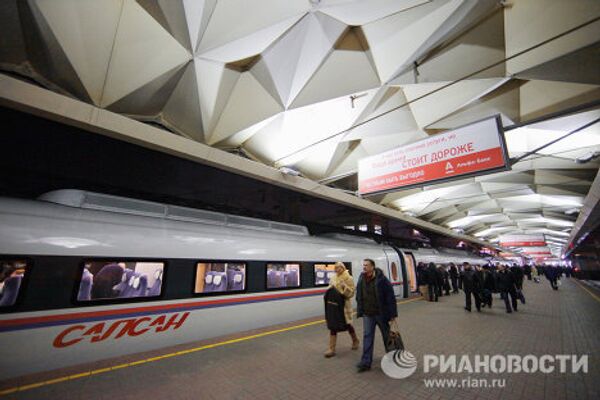
On December 17, 2009, the high-speed Sapsan train, of the Velaro RUS series, departed on its maiden journey from Moscow to St. Petersburg. Capable of reaching speeds of up to 250 kilometers per hour, Sapsan is Russia’s fastest train to date.
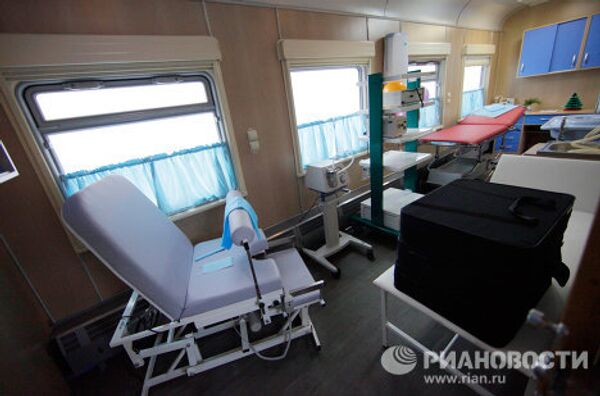
On January 21, 2010, a train fitted out as a hospital began to travel across Siberia’s Irkutsk Region. The train, named Fyodor Uglov, consists of ten cars carrying medical equipment. The medical staff working at this mobile hospital provide medical care and check-ups for the region’s residents.
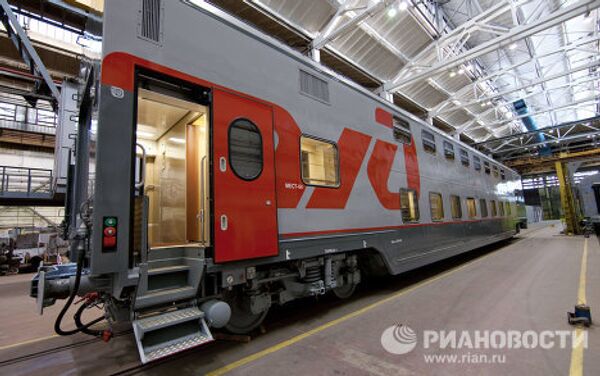
Photo: A double-decker car built by the Russian manufacturer Transmashholding in cooperation with France’s Alstom Transport at the Tver train-building plant in 2010.



